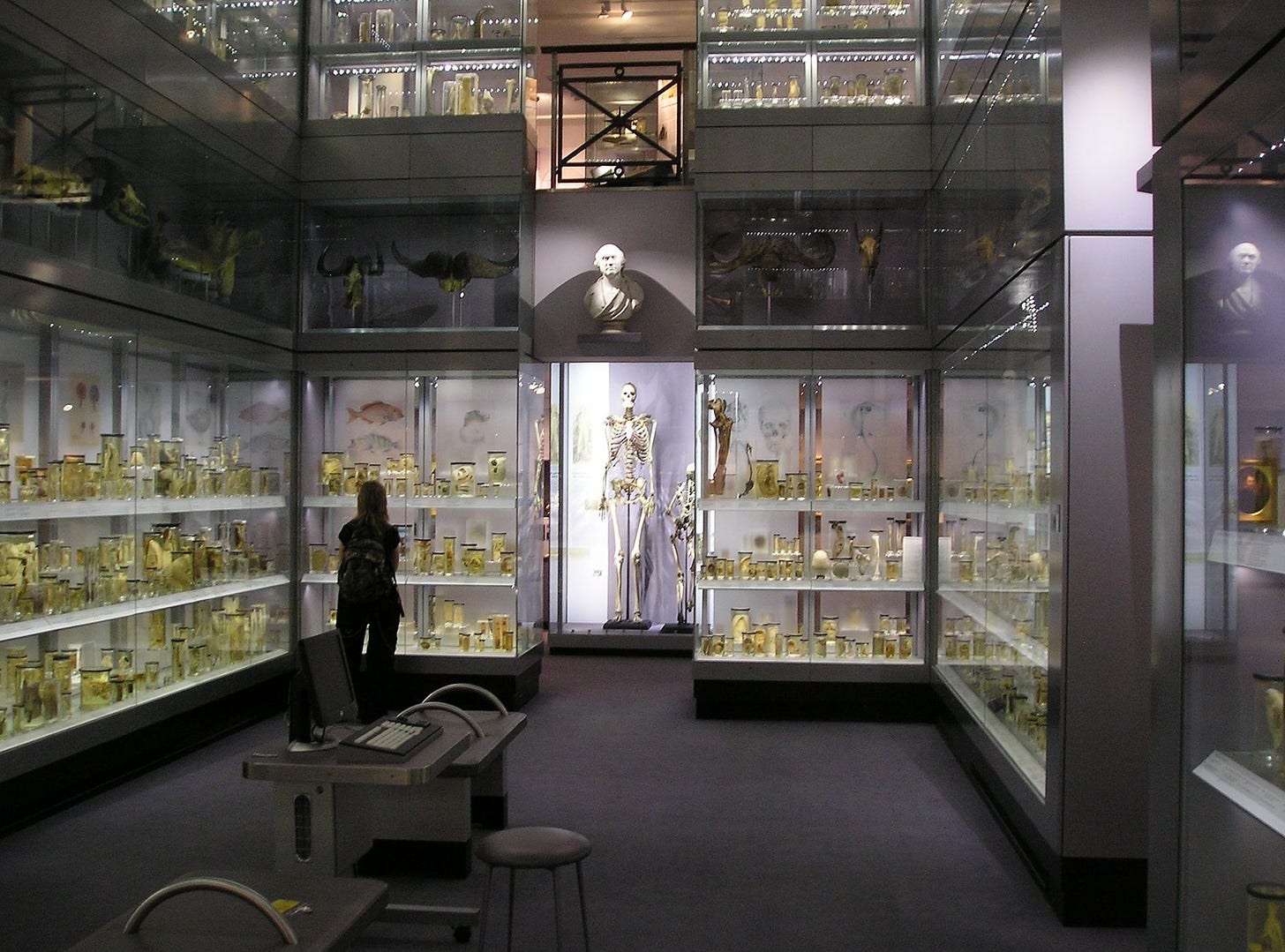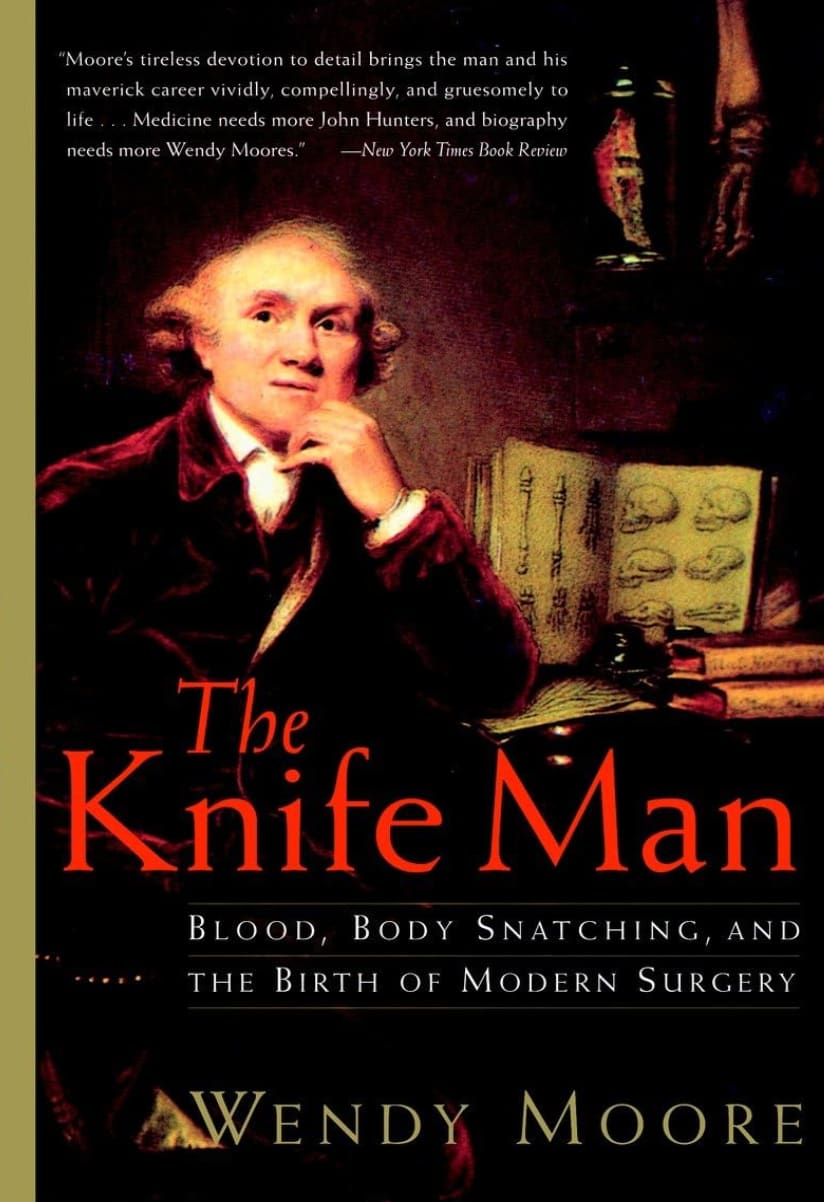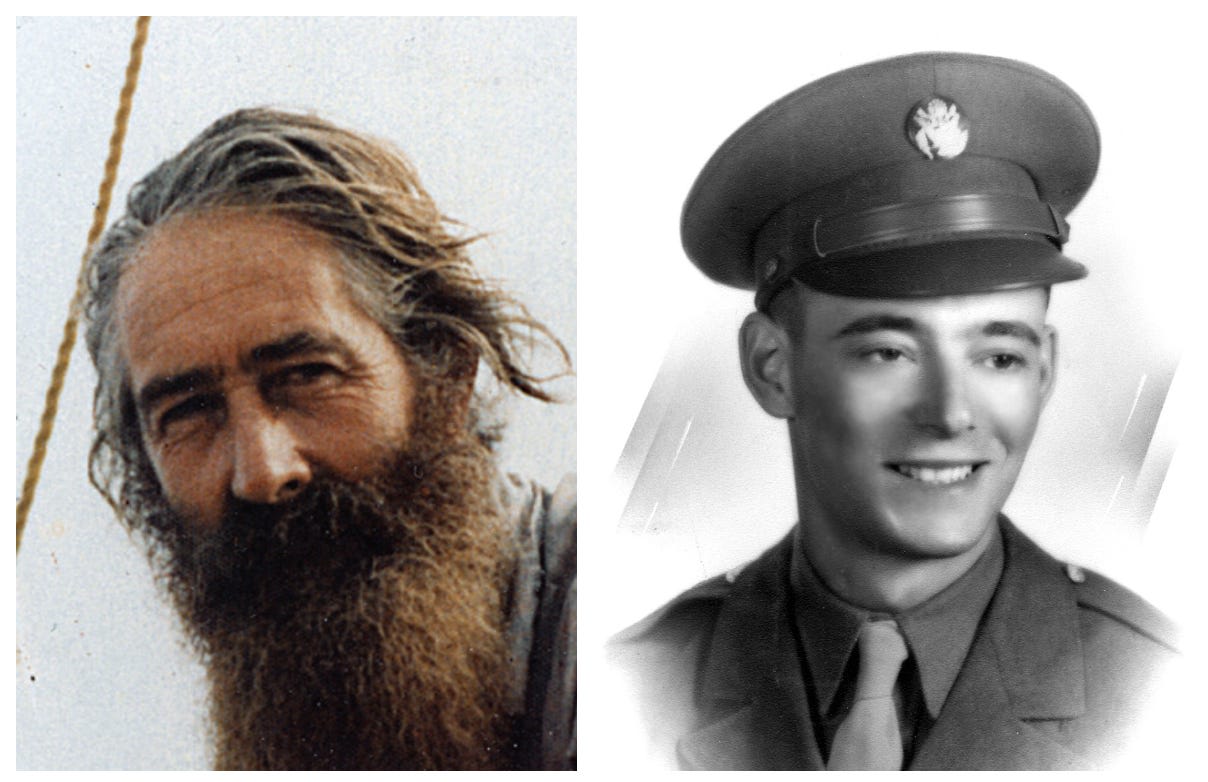Why wasn't preservation with the goal of potential future revival started earlier in history?
post by Andy_McKenzie · 2024-01-16T16:15:08.550Z · LW · GW · 1 commentsContents
What happened in 1962? None 1 comment
Cross-posted from my blog, Neurobiology Notes.
John Hunter (1728–1793) did not have an especially promising start to his academic life. He was born the youngest of 10 children to a family living in the countryside near Glasgow. They lived in a two bedroom cottage and the children slept in box beds that were pulled out of the walls every night. He was stubborn, hated school, did not like to be taught reading or writing, would skip classes whenever he could, and quit formal education altogether at 13, the same year his father died. He said that he “totally rejected books,” instead preferring to gain practical knowledge first hand. He spent his time helping with the family farm. When he was 20, he made the fateful decision to join his brother William Hunter's anatomy school in London as an assistant. He went on to discover that maternal and fetal circulations are separate, invent the technique of proximal ligation to treat aneurysms, either inoculate himself or someone else with venereal disease purely in the name of science, coordinate the first documented artificial insemination, propose the gradual formation of new species due to random variations 70 years before Darwin, create a school providing lectures in physiology, make enemies with all of the other surgeons at his hospital, almost die when he was attacked by one of his many exotic animals, amass a huge collection of specimens that he spent nearly all his money on and that remains in London today, and become the person widely considered the founder of modern scientific surgery.
a photo from the Hunterian museum in London
I learned this all from Wendy Moore's excellent biography of John Hunter, The Knife Man:
Although I’m a closet Anglophile, the main reason I picked this book up is because Hunter also seems to have been one of the first people, if not the first person, to seriously research suspended animation. Suspended animation is a hypothetical procedure in which a person or other animal could be preserved for a long period of time in a way that the procedure is known to be reversible, allowing for reanimation at the time of one's choosing. Suspended animation is not the same as cryonics, because in cryonics, it is not known whether the preservation will ever be reversible, so a cryonics procedure relies on the possibility of bootstrapped advances in future technology that might allow reversibility.
Hunter was interested in suspended animation for a number of reasons, including because he was interested in the dividing line between life and death, and because he thought it might make him rich. He also thought that it might be practically useful:
Till this time I had imagined that it might be possible to prolong life to any period by freezing a person in the frigid zone, as I thought all action and waste would cease until the body was thawed. I thought that if a man would give up the last ten years of his life to this kind of alternate oblivion and action, it might be prolonged to a thousand years; and by getting himself thawed every hundred years, he might learn what had happened during his frozen condition.
In 1766, Hunter performed an experiment to test this. He placed two carp in a glass vessel with water. He then kept adding cold snow to the vessel. At first the snow repeatedly melted, but eventually the water around the fish froze. He thawed them slowly, but found they did “not recover action, so that they were really dead.”
Benjamin Franklin had similar ideas. In the cryonics community, Franklin's remarkable letter to a friend in 1773 is kind of famous:
I have seen an instance of common flies preserved in a manner somewhat similar. They had been drowned in Madeira wine, apparently about the time when it was bottled in Virginia, to be sent here (to London). At the opening of one of the bottles, at the house of a friend where I was, three drowned flies fell into the first glass that was filled. Having heard it remarked that drowned flies came back to life in the sun, I proposed making the experiment upon these. They were therefore exposed to the sun upon a sieve which had been employed to strain them out of the wine. In less than three hours, two of them began by degrees to recover life. They commenced by some convulsive motions in the thighs, and at length they raised themselves upon their legs, wiped their eyes with their fore feet, beat and brushed their wings with their hind feet, and soon after flew away, finding themselves in Old England, without knowing how they came thither. The third continued lifeless till sun-set, when, losing all hopes of him, he was thrown away.
I wish it were possible, from this instance, to invent a method of embalming drowned persons, in such a manner that they might be recalled to life at any period, however distant; for having a very ardent desire to see and observe the state of America an hundred years hence, I should prefer to an ordinary death, the being immersed with a few friends in a cask of Madeira, until that time, then to be recalled to life by the solar warmth of my dear country! But since, in all probability, we live in a century too little advanced, and too near the infancy of science, to see such an art brought in our time to its perfection, I must, for the present, content myself with the treat, which you are so kind as to promise me, of the resurrection of a fowl or a turkey cock.
Franklin and Hunter were friends. (In 1786, Hunter writes to Franklin “My Dear Old Freind I Take this oppertunity of Enquiring after your health and to Tell you that I am yet in the Land of the Living.”) Having learned more about Hunter, my guess is that Franklin might have gotten this idea from Hunter, but it could have been vice versa, or they both could have been influenced by a third person.
What happened in 1962?
Despite nobody seriously proposing the idea of preservation with the uncertain potential for future revival for seemingly all of human history[1], in 1962, two people — Evan Cooper (aka Stanley McBarron) and Robert Ettinger — independently proposed the idea that would a few years later be called “cryonics,” via the private publication of books that each had been working on for years. Cooper’s was “Immortality: Physically, Scientifically, Now” and Ettinger’s was “The Prospect of Immortality.”
Evan Cooper (left) and Robert Ettinger (right)
Might Hunter, Franklin, or someone else in their scene have proposed that they might still preserve people, perhaps with long-term fluid preservation, despite not yet having a long-term suspended animation method for humans? Perhaps you think cryonics or other forms of preservation today are not a good idea, in which case you might think that Hunter and Franklin were simply not gullible enough to fall for such a foolish proposal. But since I do think preservation is a good idea today, at least for those who are interested in it, I’m curious about what might have prevented people in earlier generations — like Hunter and Franklin’s — from coming up with it sooner. I have a few thoughts on what factors might encourage someone to propose this idea. Here goes:
1: It requires a high estimated probability of progress in the future. Many people don’t share this expectation. If one expects stagnation or decline, then the expected value goes down considerably, because it becomes much less likely that technology will ever get better in the future to enable revival from a preservation procedure, as well as reversing the cause(s) of clinical death.
Hunter and Franklin were two of the greats of the era of Enlightenment. They both had this one covered. I'm sure they would be keen to learn about all the wonderful technology we have available to us today. But even Hunter didn’t consider the possibility of medicines to extend life, which many think is plausible in the upcoming decades, and which changes the calculus of his hypothetical preservation project, so that one would no longer be required to give up years to access it.
2: A willingness to stick your neck out if you believe in something. This is required to be an early adopter or innovator in anything potentially controversial. The vast majority of people don't have this, but some do. Hunter and Franklin both had it in spades.
3: Finding the idea of long-term preservation plausible. It is surely not a coincidence that the golden age of cryobiology and cryoprotectants began in the 1950s and that by in the early 1960s people were already proposing to use this technology for preservation of humans. Ettinger thought suspended animation was just around the corner, writing “[i]t must also be remembered that before long the option of suspended animation will be available.” Obviously, he was wrong about that, but it’s possible that this optimism helped drive him to action.
4: Practical advances in preservation technology. For example, nitrogen was not liquefied until 1877 and its production at scale took several more decades. It is common that scientific theory is heavily influenced by advances in engineering and this seems to be no exception.
5: Liberal government and society. It’s easy to imagine that Georgian society would have not allowed people to do this even if they wanted to. Even on Long Island in 1970, a cryonics organization was protested by an angry mob of 30 people carrying torches.
6: Advances in information theory, cybernetics, math, and computers. Cybernetics, in particular, was highly influential, with both Cooper and Ettinger mentioning Norbert Weiner in their books. These advances lead to the idea that one can think of a biological organism as a type of machine. This, in turns, leads to the idea of structural and molecular preservation as a possible mechanism to restore biological function in the future.
7: Realizing that imperfection is the key to perfection. One thing Hunter and Franklin missed, at least from my perspective, is that the method for preservation need not necessarily be brought to "perfection" in their lifetimes in order to pursue it. Some of this could be punted to the future.
8: Less war. When I first told my dad about cryonics, he told me that it was a thing people would have been working on if they hadn’t been so focused on war for most of human history.
9: More knowledge of neuroscience. The ancient Egyptians, when they practiced body preservation, removed the brains to minimize putrefaction. Ettinger, building on a huge number of advances in science and technology since then, knew that the brain was the key, pointing out that neuroscience experiments had found that memories were “stored as a structural modification of some sort” and in particular were “believed to consist of changes in protein molecules in the brain cells.”
10: More humans involved in science and technology. There were just way more people around in the 1960s that were knowledgeable about these areas than in the late 1700s. That means that there were more people who could come up with and suggest this idea. People matter and ideas matter.
I’m interested to hear if any of you — my brilliant readers — have any ideas about this. Not just engagement farming, I’m honestly curious.
- ^
I’m not sure if this idea was seriously proposed before Cooper and Ettinger or not. I’d like to learn more about this. E.g., about what was the intention of body preservation in ancient Egypt.
1 comments
Comments sorted by top scores.
comment by Dagon · 2024-01-16T17:15:05.511Z · LW(p) · GW(p)
It requires a number of extremely optimistic beliefs. Both about technological/medical progress, and about economic arrangements and value of reviving a corpse with outdated skills and offensive historical ideas vs just having a baby the future-wizards can raise with their values.
Worse, as the wager (give up the rest of "natural" life for a chance of future life) gets a bigger payoff (remaining QALY goes down), the probability of revival goes down as well - there are simply more hurdles to overcome, and it seems VERY likely that reversing aging is going to be an order of magnitude harder than preventing or slowing it.


